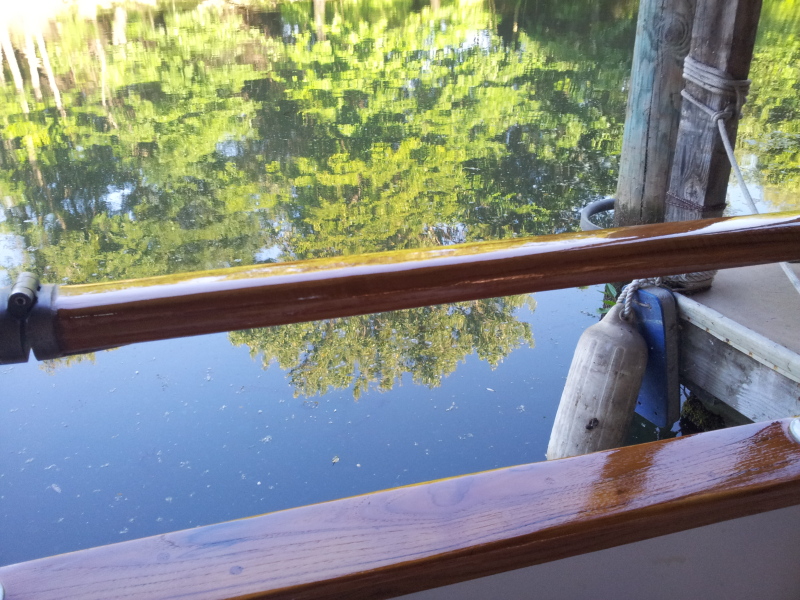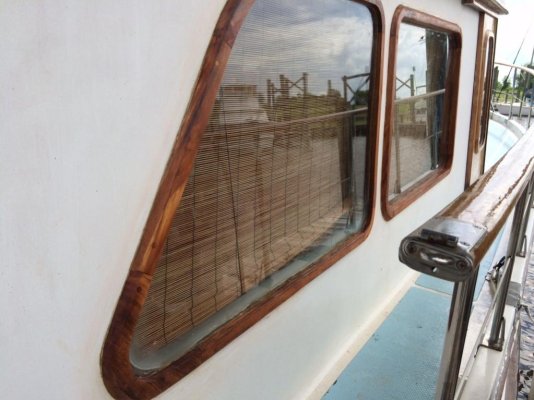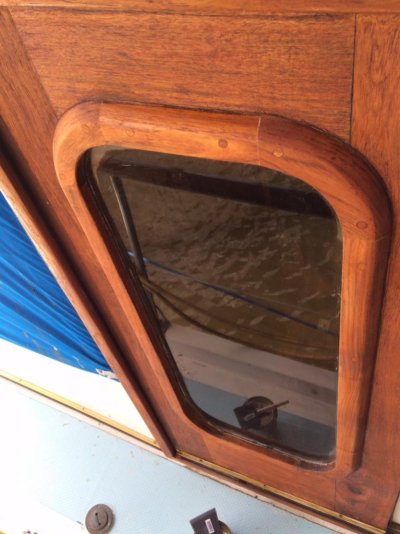Beginner's Stuff-Up: well, I started great guns. Got the timber cockpit doors back to bare wood and sanded smooth. Applied 2 coats of CPES wet-on-wet and gave it 36hours+ to cure. This raised the wood as previously advised so I sanded it smooth again, then applied one more coat of CPES. After 6 hours or so, while still tacky, applied a first coat of varnish to both doors. 24 hours later, they looked really great: the CPES had filled the grain and with just one coat the varnish was looking smooth & glossy. So, I enthusiastically applied a 2nd varnish coat to one door. Finished the first door and stopped to look over my work. As I looked, the surface began to orange-peel and bubble up! Remember, this was my 2nd coat of varnish, so I didn't suspect the CPES....I thought I hadn't given the first varnish coat time enough to cure. Fortunately I hadn't 2nd-coat'd the 2nd door, the first coat on which continued to look great. So to play safe, I left the 2nd door alone for another 48 hours while I stripped back (heat gun, scraper and sander) the first door. I also called CPES tech support for advice: didn't get them immediately so left a msg.
So now I had one door stripped back (I suppose much of the CPES coats were still intact) and one door with an un-blemished 1st varnish coat on board. I re-varnished the stripped door and waited...and waited....all looked good again. So I started putting a 2nd coat on the 2nd door, but was cautious and only did a couple of the rails....only to see the orange peel/bubbles effect again !
Then the CPES tech support guy called me. Long story short, the idea of putting varnish onto tacky CPES only works for 2-pack varnish products (polyurethane, Bristol, etc). For one-pack varnishes like I'm using, the CPES must be allowed to fully cure, be sanded smooth and cleaned off with a water-damp rag. No one-pack varnish onto tacky CPES!
Hope this helps another varnishing newbie!
Anyway, the 2nd door has now been cleaned back and another '1st' coat of varnish applied...looks good. The 1st door now has 3 coats of varnish on & is looking great. I'll keep on coating with varnish until I get 6 coats on or the Admiral kicks me out of the garage, whichever happens first.











